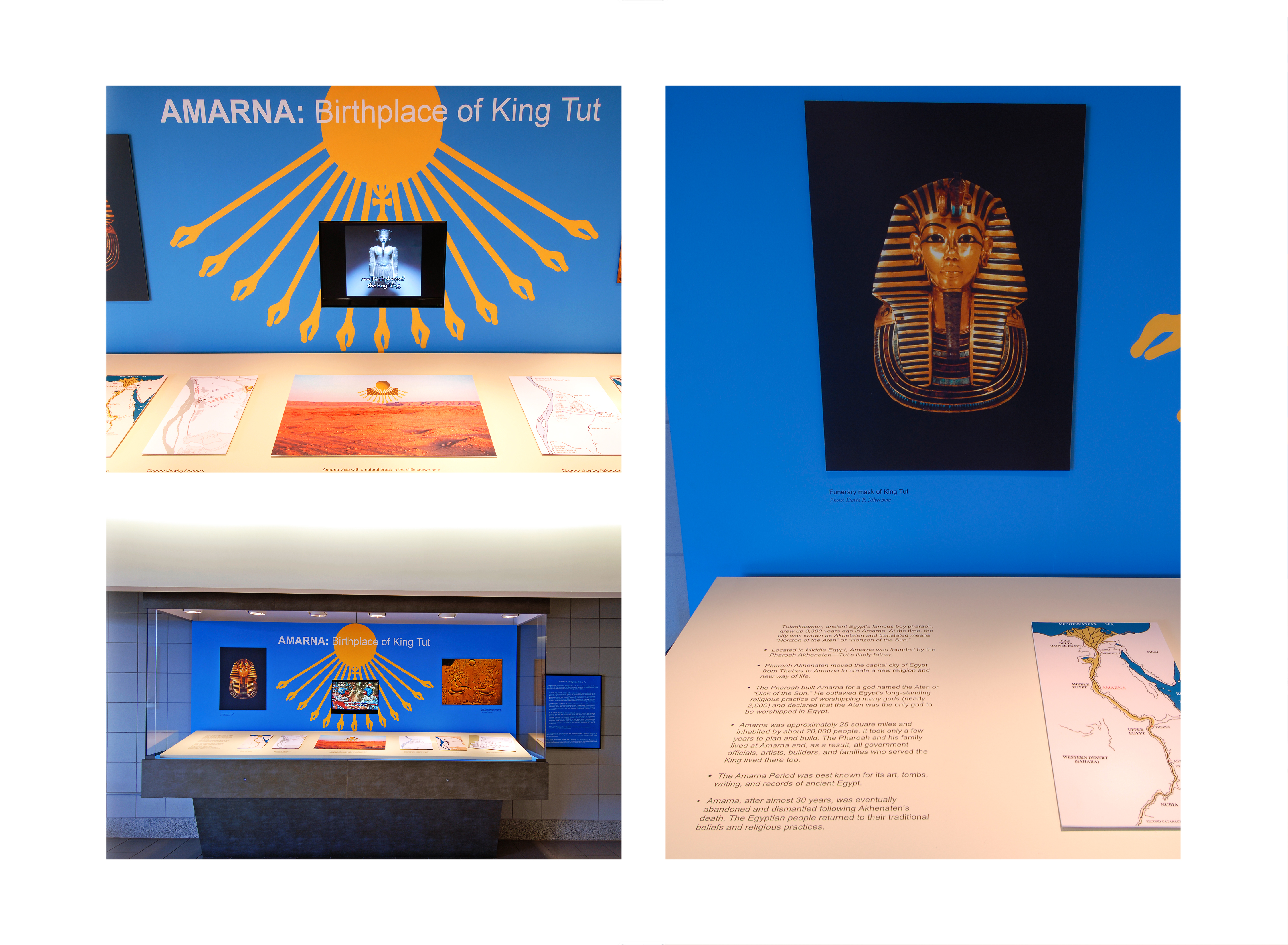May 24, 2007 - November 5, 2007
This exhibition is presented in conjunction with Amarna, Ancient Egypt's Place in the Sun at the University of Pennsylvania Museum of Archaeology and Anthropology, Philadelphia.
"A young boy, soon to ascend to the throne of Egypt, gazes solemnly at the notch in the cliffs bordering the city of Akhetaten on the east bank of the Nile. Aten, the sun disk and Egypt's sole god, would appear in this central indentation as the day dawned. The boy is Tutankhaten, better known to history as Tutankhamun, and the place, Akhetaten, is the new royal city (modern Amarna) built by his probable father, the heretic king, Akhenaten.
This innovative capital city, its original architecture, its new style of art, and the revolutionary ideologies that surrounded Tutankhamun during his early childhood years are the focus of Penn Museum's exhibition Amarna: Ancient Egypt's Place in the Sun featuring the Amarna Period (c. 1353-1319 BCE).
In a radical departure from traditional Egyptian beliefs and political systems, and with the construction of the new royal city at Amarna, the Pharoah Akhenaten toppled more than a millennium of established Egyptian practices. His changes were but a short-lived victory, however, surviving his death in c. 1336 BCE by only a few years. Tutankhamun's ascension to the throne of Egypt in c. 1332 BCE marked the return of the pantheon of gods and eventually the abandonment of Amarna as a seat of royal power."
- Written by Dr. Deborah I. Olszewski, Senior Research Scientist, Penn Museum Excerpt from ex3, Fall 2006, Penn Museum
For more information about the University of Pennsylvania Museum of Archaeology and Anthropology or the exhibition Amarna, Ancient Egypt's Place in the Sun visit www.museum.upenn.edu or call 215-898-4000.




